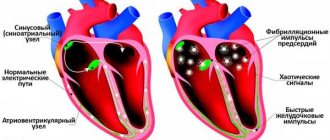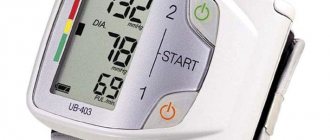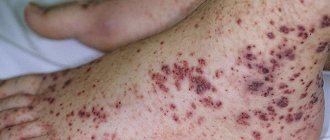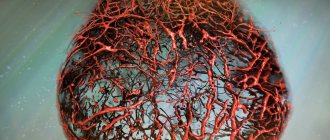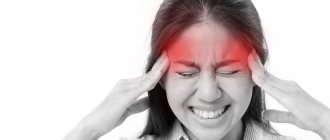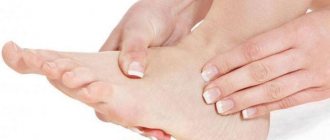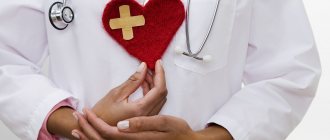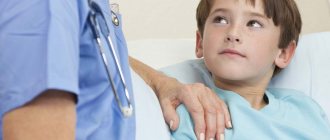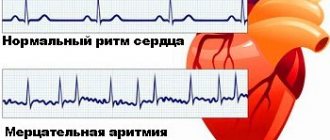The meaning of the word arrhythmia translated from ancient Greek is “clumsiness”, and it explains the cause of the disease as correctly as possible. Disruption of the specific area of the heart muscle in which the heart rate is produced (sinus-atrial area) gives rise to arrhythmia in children. If the heart rate slows down its own work, less than 60 beats per minute, we speak of bradycardia. If the heart rate exceeds 100 beats per minute - tachycardia. Both discrepancies with generally accepted norms may indicate the formation of both heart disease and ailments of the autonomic and endocrine systems.
Causes
The primary cause of arrhythmia in a 16-year-old teenager may be excitation of the heart muscle. If the heart muscle development system is abnormal, it will have a serious impact on the heart rhythm.
Serious diseases such as various infections, heart failure, heart disease (both congenital and acquired), cardiomyopathy, can be the main causes of arrhythmia.
You should not immediately attribute palpitations that occur after physical activity, possible problems at school, drinking energy drinks, or disturbances in sleep-wake patterns to pathology. This indicates the presence of sinus cardiac arrhythmia. It can arise due to an imbalance in the functioning of the vegetative-vascular system, in its inability to correctly perceive the changes that occur in the body of a teenager.
You should immediately consult a doctor when arrhythmia occurs in a teenager for no reason, in the absence of exercise, or when the rapid heartbeat becomes systematic. In these cases, the body needs to be checked and, when the diagnosis is confirmed, proceed to urgent treatment to avoid further deterioration of the condition.
Classification
The meaning of the word arrhythmia from ancient Greek - awkwardness - perfectly defines the cause of the disease. Disturbance in the functioning of a certain area of the heart muscle where the heart rate is generated (sinoatrial node) and causes arrhythmia in the child. If the heart rate slows down, becomes less than 60 beats per minute, they speak of bradycardia. If the heart rate exceeds 100 beats per minute, this is already tachycardia. Both deviations from the norm may indicate the development of both heart disease and diseases of the autonomic and endocrine systems.
| Classification of arrhythmia | ||
| Name | Characteristic symptoms | Dangerous consequences |
| Sinus bradycardia | Decrease in heart rate to 30-50 beats/minute, weakness, loss of consciousness | Sudden cardiac arrest |
| Sinus tachycardia | Heart rate within 90-160 beats/minute | Decreased blood pressure, oxygen starvation |
| Sinus arrhythmia | Heart rate changes periodically, does not go beyond normal limits, disappears when you hold your breath | Non-hazardous, does not require special treatment |
| Paroxysmal tachycardia | Heart rate reaches 220 beats, the attack begins suddenly, lasts from several seconds to several hours | Heart failure |
Causes of arrhythmia in adolescence
When consuming large amounts of energy drinks, arrhythmia may occur.
The root cause of arrhythmia lies in a change in the conditions for the formation of excitations of the heart muscle. The abnormal development of the cardiac conduction system affects the heart rhythm. Cardiac causes include such serious diseases as heart failure, acquired or congenital heart disease, cardiomyopathy, and infectious diseases. An accelerated heart rate caused by physical activity, problems at school, abuse of “energy” drinks, or sleep disturbances is not a pathology. This manifests itself as sinus arrhythmia of the heart. The reason for its occurrence lies in the imbalance of the vegetative-vascular system, its inability to adequately respond to changes occurring in the body.
How does arrhythmia manifest itself?
The body of a teenager during puberty undergoes significant hormonal changes. Increased production of estrogen and testosterone affects the emotional background of the future adult. Other symptoms accompany tearfulness and irritability:
- frequent attacks of dizziness,
- muscle weakness, lethargy,
- physical activity causes painful symptoms in the heart area,
- disturbances in the blood circulation of the brain lead to a decrease in concentration and the ability to remember information in the required volume.
Symptoms
If we consider the symptoms of sinus arrhythmia in adolescents, they are different with established bradycardia (decreased heart contractions) and tachycardia (increased contractions). Teenagers quite often experience the first symptoms in the form of a sudden increase in heart rate or, conversely, an interruption in the functioning of the organ. As a result, a feeling of weakness appears, sweating increases significantly and slight dizziness occurs.
Reasons for the development of bradycardia in adolescents
Bradycardia is most common in children who have had open heart surgery, especially in cases involving surgery on tissue near the sinus node.
If the sinus node tissues become damaged or irritated, they may function more slowly than normal, resulting in sinus bradycardia. This is seen in some types of atrium operations, such as mustard or during Sanning procedures for transposition of the great vessels. The same applies to patients with hypoplasia of the left heart.
Other signs
Sometimes there are complaints of pain in the heart and chest. The degree of pathology has a direct impact on all further symptoms, so there are cases when signs are completely absent. If a child suddenly has difficulty breathing and the skin turns pale, parents should immediately seek medical help. Arrhythmia becomes especially pronounced in cases of severe necrosis or infectious disease of the myocardium.
In such patients, the pulse increases, but it is quite difficult to listen to it. The skin becomes paler and blood pressure drops rapidly. If a heart problem is detected, it is important to closely monitor your child's condition and consult a doctor immediately.
Consequences of arrhythmia
Arrhythmia requires a certain response from the patient. Measures differ depending on the type of pathology, the degree of its development and other factors. In some cases, you only need to change your lifestyle, in others, you need to take medications, and in others, you need to decide on surgery altogether.
If a person ignores the disease, it will lead to more serious pathologies.
Arrhythmia can provoke the development of other heart diseases, for example, heart failure. When the pulse rate is low, the patient often suffers from fainting, and the likelihood of falling into a coma increases.
Kinds
Adolescent children periodically experience interruptions in heart rhythm. The following types of arrhythmia in adolescents are common:
- Respiratory arrhythmia. It is the most typical arrhythmia for a teenage child. During the inhalation phase, the heart rate increases, and during the exhalation phase, it shortens. This manifestation of instability is a consequence of a malfunction of the nervous system. Increased excitability during adolescence is normal, but the appearance of irregular heart rhythm is considered a symptom of the disease.
- Single or multiple extrasystoles. The sudden occurrence of extraordinary contractions of the heart muscle. The main cause of arrhythmia in adolescents is considered to be increased growth of cardiac muscles. Extrasystoles do not manifest themselves in any way. Their presence can only be detected using electrocardiography.
- Tachyarrhythmia. Increased frequency of contractions (more than 100). Often accompanies severe intoxication and diseases of the endocrine glands.
- Bradyarrhythmia. Reduction of heart contractions to 50. Develops against the background of strong emotional overexcitation.
A pediatric cardiologist talks about the most common causes of sinus arrhythmia in a child
Often, sinus arrhythmia in a child occurs due to the following factors:
- increased physical activity;
- stressful situations;
- increase in temperature indicators;
- infectious diseases;
- changes in hormonal levels;
- use of certain types of medications.
The factors listed above do not require special treatment, since they are considered a physiological reaction of the body. However, there are also pathological factors that can pose a health hazard. Cardiac arrhythmia in adolescents can be caused by the following reasons:
- vegetative-vascular dysfunction;
- tendency to neuroses;
- foci of chronic infection;
- electrolyte imbalance;
- lack of calcium and potassium in the body.
During adolescence, the child’s body undergoes significant changes, and not all organs and systems develop evenly, which leads to various types of dysfunction. Arrhythmia in teenagers becomes a cause of concern for many parents. which, one way or another, manifests itself in almost every second child.
In recent years, arrhythmia has become the object of increased attention from doctors, since sometimes arrhythmia can lead to cardiac arrest, but in most cases it does not pose a particular danger to the child’s health. Most often, a teenager does not even suspect that he is sick, and the diagnosis of arrhythmia appears after a routine visit to the pediatrician or a school medical examination.
In the initial stages of the disease, doctors recommend only dynamic observation and the absence of serious physical activity, but if the symptoms of the disease do not go away for more than 2 years and even worsen, this should be a reason to prescribe special treatment due to the risk of heart failure.
- Laryngitis in an infant
- Laryngitis in children under one year old
- Prevention of laryngitis in children
- Acute laryngitis in children
- Signs of laryngitis in children
- White diarrhea in a child
- Supraventricular crest syndrome
Often, arrhythmia in adolescents manifests itself in the form of bradycardia, that is, a slowdown in the heart rate. Previously, medicine did not consider this disorder to be serious, but modern research has changed this point of view. Bradycardia greatly interferes with the child's daily life, since due to insufficient oxygen supply to the brain, he cannot fully express his intellectual abilities and has a slow reaction. If you ignore the presence of bradycardia, then after a while it can transform into tachycardia.
It should be remembered that arrhythmia is not always initially caused by disturbances in the functioning of the heart, since endocrine, pulmonary, and neurological disorders can also provoke it. Even a common cold can affect your heart rate, as your heart rate increases as your body temperature rises.
In children who suffer from vegetative-vascular dystonia, the arrhythmia can be of a phantom nature, since such children are extremely suspicious of the slightest changes in the functioning of the body. In this case, the pediatrician may recommend the prescription of sedatives, as well as consultation with a child psychologist.
However, parents should not leave things to chance and, even if the pediatrician does not pay due attention to the child’s complaints, ask for a referral for a cardiogram. This also needs to be done if the child wants to play any sport.
The child's body has a number of characteristics. This also applies to the cardiac system. Immaturity of the nervous system and emotional instability sometimes lead to abnormal heart rhythms. Arrhythmia in a child is a disturbance of heart rhythm, both due to diseases of the conduction system and physiological. Let's look at the concept of “sinus arrhythmia in children”, what are its causes and treatment.
The heart is one of the main organs and, in fact, the only one that can create electrical impulses. Their main source is the sinus node. It is a cluster of nerve cells that are localized in the right atrium.
Impulses originate in the sinus node in a number corresponding to the age norm of each child, and then along the conductive paths they descend through all parts of the heart, where they cause contraction - sinus rhythm.
The correct rhythm is a rhythm with equal time intervals between heart impulses.
Age norms for heart rate
- sinus tachycardia - rapid heartbeat;
- sinus bradycardia - decreased heart rate;
- extrasystole - extraordinary contraction of the heart;
- respiratory arrhythmia.
Children's arrhythmia occurs in two variants:
- Moderate sinus arrhythmia in a child. Occurs in adolescents and children under 5 years of age.
- Severe sinus arrhythmia in a child. It is rare, mainly in children due to rheumatism. Severe arrhythmia can occur in athletes.
- pathology of the nervous system - intracranial hypertension, postpartum asphyxia in a child;
- Growth peaks in children 5 - 6 years old, 9 - 10 years old. At this moment, a sharp jump in growth occurs, as well as in the mass of the myocardium, as a result of which the heart vessels and conduction system do not keep up with the increase in the heart muscle;
- obesity;
- rickets;
- hereditary predisposition;
- inflammatory changes in the membranes of the heart;
- infectious diseases with water-electrolyte imbalance;
- lack of microelements potassium, magnesium, calcium;
- congenital heart defects.
You can find the following phrase in the description of an ECG. We found out that the main pacemaker is the sinus node. But it happens that it loses its dominant role, and ectopic foci of activity appear in the other atrium.
Diagnostics
If a child begins to complain of discomfort in the heart area, it is important to immediately seek qualified medical help.
First, you need to make an appointment with a pediatrician, who will order an ultrasound of the heart to establish an initial diagnosis. Any irregularities in the heart rhythm should be identified by a cardiologist. In the future, the patient will have to undergo a series of examinations.
Thanks to the ECG, it is possible to provide a detailed analysis of the physical condition of the heart. This study helps in identifying myocardial damage, and it can be chronic or acute. The frequency and regularity of contractions of the heart muscle will also be accurately determined.
The next study is called EchoCG. Here the specialist performs the work exclusively using ultrasound. The heart muscle will be clearly visible on the monitor screen, which makes it possible to study in more detail the features of the movement of blood flows not only in the atria, but also in the ventricles.
It has already been said that with the help of ultrasound, the doctor will be able to make a diagnosis, but for a detailed answer it is necessary to conduct a number of laboratory tests. To do this you will need to donate blood.
Symptoms of sinus arrhythmia
The clinical picture that occurs with different types of pathology can vary within fairly wide limits. With an increased heart rate, people complain of palpitations, lack of air, and chest pain. It is possible that sensations may irradiate to the left arm, which often causes misdiagnosis of an angina attack. Psycho-emotional status has changed. A person feels anxious, restless, and may be overly active.
Moderate bradyarrhythmia practically does not manifest itself externally. With a significant decrease in the number of systoles, the patient experiences dizziness, severe weakness, and impaired consciousness. Syncopal episodes, tonic or clonic convulsions, and loss of spontaneous breathing are possible. The skin is pale, covered with cold sticky sweat, blood pressure is sharply reduced. The pulse is low tension and filling, and is difficult to palpate. With variant sinus arrhythmia, the symptoms are mild. A changing clinical picture of bradycardia and tachycardia may be observed.
Drug treatment of arrhythmia in a teenager
The choice of drug therapy depends on the root cause that provoked the disturbances in heart rate. After conducting the appropriate diagnosis, the attending physician, based on the results obtained, selects medications, taking into account age-related restrictions and contraindications. In cases where the manifestation of arrhythmia is a consequence of physical overload, nervous stressful situations at school, drug treatment at the initial stage is carried out using sedatives based on medicinal herbs that normalize heart rhythms, for example:
- tincture of valerian, motherwort;
- "Dormiplant" based on lemon balm and valerian root.
Sinus arrhythmia during pregnancy
Heart problems often occur during pregnancy. The reasons for such phenomena have not been sufficiently studied. It is known that no specific electrophysical changes occur in the myocardium and its excitation zones. Experts believe that the development of sinus arrhythmia occurs for the following reasons:
- physiological increase in blood volume;
- increased stroke volume and cardiac output;
- natural increase in the concentration of certain hormones: estrogen, progesterone, angiotensinogen and others;
- increased sensitivity of adrenergic receptors.
The presence of SA leads to hemodynamic instability, deterioration of the fetal condition, and its hypoxia. The risk of pathology in the formation of the central nervous system and intrauterine growth retardation increases. On the part of the woman, experts note the possibility of premature placental abruption, impaired contractility of the uterus, the occurrence of myometrial hypertonicity, and the risk of pathological termination of pregnancy.
The question of prescribing pharmacological therapy is decided individually, after a thorough analysis of the benefit/risk ratio. Almost all antiarrhythmic drugs are able to overcome the transplacental barrier, many of them have a teratogenic effect or have not been studied enough. The safest drugs are quinidine, digoxin, and adenosine. If absolutely necessary, the use of verapamil and diltiazem is permissible. The most dangerous is amiodarone, which causes developmental abnormalities and premature birth.
Pharmacological substances
If the use of sedatives does not have the desired effect, the attending physician determines the necessary list of pharmacological antiarrhythmic drugs depending on the nature of the cardiac pathology. The following groups of drugs used to treat arrhythmia in adolescents caused by cardiac diseases can be distinguished:
- In case of heart rhythm disturbances due to hypokalemia, potassium preparations are prescribed, including potassium chloride solution, Potassium Orotate, Panangin. The intake and dosage of these drugs is carried out under the strict supervision of the attending physician in order to prevent hyperkalemia.
- To reduce the conductivity and excitability of the heart muscle, the drug “Novocainamide” is used. The dosage of the drug is selected simultaneously with blood pressure monitoring and an electrocardiogram.
- For atrial fibrillation, as well as attacks caused by paroxysmal tachycardia, Ethmozin is usually prescribed. The medication is used in tablet form; for intramuscular injections, it is administered together with novocaine. When administered intravenously, Ethmozin is diluted in a solution of sodium chloride or glucose.
- To relieve attacks of arrhythmia in children and adolescents, adrenolytic and local anesthetic drugs such as Anaprilin and its analogues are widely used. "Oxenoprolol" has a similar effect, but it is less toxic and has a milder effect in normalizing blood pressure.
- In the complex treatment of arrhythmia, it is also necessary to use drugs that normalize the metabolic processes of the heart muscles, including Riboxin and Cocarboxylase.
How dangerous is severe sinus arrhythmia in children?
Severe sinus arrhythmia is a pathological condition characterized by disruption of the source of impulses in the sinus node. During normal operation, it is in the sinus node that electrical impulses are formed that set the heart rate, varying from 60 to 80 beats per minute. If this indicator changes upward, tachycardia is diagnosed, and if the rate slows down, bradycardia can be diagnosed, and in addition, a third option is possible, accompanied by an irregular heartbeat.
The main reasons for the development of severe sinus arrhythmia
The reason for the development of pronounced arrhythmia largely lies in the fact that the sinus node, which is the source of impulses in the heart, on the one hand, is autonomous, and on the other hand, subject to the influence of many external factors that can have both a depressing and stimulating effect. Often the pathology is associated with breathing, since when you inhale, the number of beats can rapidly increase, and when you exhale, correspondingly decrease.
Sinus arrhythmia occurs most often in children and adolescents. In many ways, the development of rhythm disturbances in childhood is associated with the individual characteristics of the functioning of the body, and in addition, the lability of the autonomic nervous system. For the most part, the development of rhythm disturbances in children does not have clear symptoms, since this condition is physiological and not pathological. If sinus arrhythmia is a physiological condition, it is not treated, since it will disappear on its own with age. However, it should be noted that this condition can be the result of a variety of pathological factors. These factors include:
- Heredity. Parents who at a certain stage of life suffered from this heart rhythm disorder often have children with such a deviation.
- Congenital or acquired heart defects
- Poisoning with medicinal or toxic substances.
- Infectious diseases. If pathogenic microflora enters the heart, endocarditis or myocarditis may develop.
In addition, severe sinus arrhythmia is rarely observed in people of all ages with diseases such as:
- typhoid fever;
- hypothermia;
- liver failure;
- arterial hypertension;
- hypothyroidism
Among other things, hormonal surges, which are not uncommon in adolescence, can lead to severe sinus arrhythmia.
Symptomatic manifestations of severe sinus arrhythmia
Considering that most often such rhythm disturbance occurs in young children, it is extremely difficult to interview the patient to identify the problem. There are quite a few markers that can be eliminated even without the use of specific diagnostic tools. Characteristic markers indicating the presence of a rhythm disorder include:
- poor sleep;
- restless behavior;
- pale or blue discoloration of the extremities;
- dyspnea;
- rapid fatigue, expressed in reluctance to play.
Older children also note discomfort in the chest area, pain, as well as a feeling of squeezing and cardiac arrest. In addition, there are often cases when heart rhythm disturbances are accompanied by dizziness, fainting and even headaches.
Treatment of severe sinus arrhythmia
If the symptoms of arrhythmia are mild or this condition does not manifest itself at all, targeted treatment of the arrhythmia is not carried out.
If arrhythmia is not a physiological, but a pathological condition, targeted treatment of the root cause of the pathology is prescribed.
The most common medications used to treat sinus arrhythmia are injections of atropine, procainamide, and quinide. These drugs help normalize the rhythm and also help eliminate extrasystole.
When treating young children, most cardiologists try to minimize drug exposure, since drugs intended for arrhythmia in adults can have a negative impact on the child’s overall health. The main emphasis in treating children for sinus arrhythmia is non-drug methods of influence. First of all, you should reduce your physical activity as much as possible. In addition, you need to organize the correct diet. Fried foods, processed foods and other heavy foods should be completely excluded from the diet.
Traditional treatment
Severe sinus arrhythmia in a teenager is a disease that even doctors recommend treating with folk remedies. Herbal preparations for arrhythmia in combination with medications can help even after the first use.
One of the most famous remedies for treating arrhythmia is valerian root. Motherwort and hawthorn are good for calming the heart. You can prepare the medicinal mixture yourself. The most common collection recipes:
- The first recipe. Ingredients: valerian root, calendula flowers, viburnum bark, motherwort. All herbs must be taken in equal proportions. You should steam 2 tbsp per day. l. collection and take throughout the day. The course of treatment is 7–10 days.
- The second recipe. Mix ready-made tinctures of valerian, motherwort, and hawthorn in equal proportions, add a few drops of Corvalol. Take once a day before meals for a week.
You need to know this: what is sinus arrhythmia of the heart and why is it dangerous?
The course of therapy depends on the cause that provoked the development of arrhythmia in a teenager. If the increased heart rate is due to physiological fluctuations in heart rate, then specific treatment is not required. Therapy is limited to the use of sedatives that contain herbal components.
Such medications normalize heart rhythm. A tincture of valerian or motherwort can be used. Take it 15 drops 2 times a day. They often resort to the help of a medication called Alora. Its dosage depends on how old the little patient is and how severe his arrhythmia is. In combination with taking sedative pharmaceuticals, doctors recommend normalizing the daily routine of children.
general information
Heart rhythm disturbances are a common problem associated with cardiovascular disease. Bradycardia in children is the least studied pathology in arrhythmology. It is registered in 3.5% of healthy schoolchildren.
Development mechanism
Bradycardia develops when the heart rate is below normal. In the medical literature, the sinus node is usually called the pacemaker. It is located in the wall of the right atrium and generates electrical impulses. Excitation is transmitted through the atria and reaches the atrioventricular node.
The correct heart rate is sinus (60 beats per minute in an adult). The normal pulse in children from 0 to 1 year is 132 beats per minute, and in a teenager over 15 years old it is 70. If the pacemaker generates impulses slowly, sinus bradycardia occurs.
Classification
The following forms of the disease are distinguished:
- sinus bradycardia (rhythm control function is impaired);
- heterotopic form (rare).
The most common is sinus bradycardia. It can be primary (congenital) or acquired. A weakened immune system, frequent colds, pneumonia, and meningitis cause dysfunction of the brain, internal organs and heart. Following this, an acquired disease appears.
Bradycardia in newborns develops due to impaired blood circulation in the brain, hypoxia, or hypothyroidism. Heart impulses in children with the disease are less than 100 beats per minute. In children 1–6 years old, pathology is determined when the pulse is less than 70–80 beats, in adolescents – below 60 beats per minute. A healthy child, after playing sports and active recreation, exhibits signs of physiological bradycardia. The symptoms of this condition are similar to the disease itself.
Slow heart rate occurs:
- Diagnosis, features of the disease
- Treatment and prevention of arrhythmia in adolescents
Heart problems are very common in teenagers. Sinus arrhythmia in adolescents is a pathological disorder of the rhythm and frequency of heart contractions. The disease requires constant monitoring of the patient, as it can cause cardiac arrest.
The main causes of cardiac dysfunction in sinus arrhythmia are:
- heart disease;
- hereditary factors;
- pathologies of internal organs;
- stressful situations;
- myocarditis;
- infectious diseases of internal organs;
- chemical and bacteriological poisoning;
- mitral valve prolapse;
- benign and malignant tumors;
- endocarditis;
- rheumatism;
- thyroid diseases;
- vegetative-vascular dystonia;
- pathologies during embryonic formation and fetal development.
Sinus arrhythmia is determined by the results of electrocardiography. With a moderate course of the disease, it is difficult to determine the full clinical picture. Often these forms do not require drug treatment. Therapy is limited to taking natural antidepressants and sedatives. Severe arrhythmia in adolescents requires drug treatment.
The main symptoms of sinus arrhythmia:
- Disturbed sleep.
- Fatigue and fatigue.
- Painful sensations in the heart area.
- Depression.
- Dizziness.
- Poor exercise tolerance.
- Poor appetite.
- Swelling and pallor of the face.
Arrhythmia can be more accurately determined only after electrocardiography. An ECG must be performed in comfortable conditions. The accuracy of the examination results depends on this. With the disease, the number of beats over a certain period of time remains normal; as a rule, the time intervals between contractions of the heart muscle change.
The number of strokes depends on age. In infants, the heart rate is 140 beats per minute, in children from 1 month to a year - 135 beats / min, in children from one to 5 years - 125 beats / min, in children from 6 to 10 years - 105 beats / min, in adolescents from 10 to 15 years - 80 beats/min.
When performing drug treatment for a disease in adolescents, it is necessary to correctly adjust the daily routine, ensure adequate nutrition and rest. Physical activity should be moderate and not cause a significant change in heart rate. Treatment and level of physical activity are determined only by the attending physician.
There are several methods for treating arrhythmia in adolescents:
- folk;
- medicinal;
- surgical intervention.
With drug treatment, all pathologies, tumors, infectious and chronic diseases are first eliminated. Next, complex treatment with antiarrhythmic drugs is carried out. These drugs include obzidan and novocainomide. Antiarrhythmic drugs have a number of side effects.
In rare cases, drug treatment is not enough. Surgery helps solve the problem. Surgeries for sinus arrhythmia in adolescents include radiofrequency catheter ablation, as well as placement of a pacemaker. After surgery, the patient is prescribed strict bed rest on his back for 12-24 hours.
Prevention of the disease includes a number of measures that are aimed at normalizing the heartbeat:
- Healthy diet (exclude fried, smoked and fatty foods).
- Physiotherapy.
- Staying outdoors.
- Visit to the swimming pool.
- Elimination of emotional overload and stress.
However, in people who suffer from arrhythmia for a long time, oxygen starvation of internal organs and further development of heart failure is possible.
Monitor your health and contact a cardiologist in a timely manner.
If the cause of the heart rate abnormality is a disease of the heart muscle, the doctor will prescribe appropriate treatment. The difference in treatment for adolescents is due to a number of contraindications and side effects of drug therapy. Treatment of sinus ari is allowed when the patient's age exceeds 14 years.
It is recommended to take light sedatives to reduce nervous overexcitation and stress. Among the folk methods are infusions of hawthorn and valerian roots. It is recommended to take the infusions several times a day, for a course of at least 30 days. Infusions of lemon balm and motherwort have also proven themselves well as antiarrhythmic agents. The main thing to remember is that taking herbal infusions must be agreed with your doctor.
When children get sick it is always scary. Especially if the disease is related to the work of the heart.
Unfortunately, heart problems are also diagnosed in children. Typically, such violations are detected during routine medical examinations.
Parents are frightened by any violation of the child’s health, especially problems with the heart. What is sinus arrhythmia in children and adolescents? How dangerous is the disease?
What it is
Based on the results of electrocardiography, a violation of sinus rhythm is diagnosed - sinus arrhythmia. But let us immediately note that most often this condition is associated with rapid growth and hormonal changes in the body and only occasionally indicates serious heart pathologies.
In any case, the baby should be examined by a doctor who, after conducting additional research, will determine the cause of the disease and choose the appropriate treatment tactics.
The heart is a pump for pumping blood. Ripple occurs due to electrical impulses that travel along muscle fibers, causing them to contract. This is done automatically. If for some reason the impulse is formed with a delay or advance, a malfunction occurs in the heart rhythm.
Based on heart rate, there are three types of arrhythmias:
- While maintaining the normal number of beats per minute.
- With an increase in the number of contractions - tachyarrhythmia.
- With a decrease in heart rate - bradyarrhythmia.
Sinus arrhythmia occurs as a result of changes in the conductivity of cardiac fibers, increased or decreased excitability, and failure of the automaticity of heart contractions.
By origin, the disease can be congenital, acquired or hereditary.
There are two degrees of severity:
- Moderate sinus arrhythmia in a child. Characteristic of non-dangerous forms of arrhythmia. Mild or absent symptoms. It is usually detected accidentally during routine ECGs.
- Severe sinus arrhythmia in a child. Has obvious symptoms. Accompanies diseases of the heart and blood vessels.
Prevalence
Heart rhythm disturbance is not an independent disease, but rather a manifestation or complication of the disease, or occurs as a temporary phenomenon during age-related changes in the body.
Depending on the cause, heart rhythm failure is classified as respiratory, functional or organic.
Sinus arrhythmia in adolescents is a pathological disturbance of heart rhythm with periods of acceleration and deceleration. Sinus arrhythmia is diagnosed at any age. However, teenage arrhythmia has its own specific causes and characteristics of its course.
In some cases, sinus arrhythmia is functionally related to breathing. When you inhale, your heart rate increases; when you exhale, it slows down. In the brain, the respiratory center and the vagus nerve center are located very close. Therefore, they mutually influence each other. The frequent occurrence of respiratory arrhythmia in children and adolescents is caused by the immaturity of the mechanism of nervous regulation of the cardiovascular system.
Bath
A bath with a decoction of valerian root helps greatly in the fight against severe arrhythmia in adolescents. Pour the already prepared decoction (300 ml) into the filled bath and enjoy the calming effect.
Herbal treatment is an effective method in the fight against many ailments. Such treatment will not only be cheaper, but also safer for a sensitive young body.
Cardiac arrhythmia - symptoms of the disease and what to do
For the purpose of normal contraction of muscle fibers located deep in the myocardium, the heart is endowed with a unique conduction system, which consists of nerve cells.
First, the excitation wave is concentrated in the region of the sinus node, only then does it begin to spread through the cardiac ventricles and atria. If this important process fails, arrhythmia occurs. Despite the fact that this disease is very popular among people of different ages, we often all ask ourselves the following questions: what is arrhythmia, symptoms, what to do if signs of the disease appear? These questions can be answered in this article.
Arrhythmia symptoms what to do?
The development of arrhythmia in adolescents has a lot of reasons, which are both anatomical and functional. Often, irregular heart rhythms are a clear sign of another, sometimes much more serious, disease.
Prevention
Failure of the heart muscle should not be ignored. Against the background of hormonal changes, it is important not to miss the development of the disease. Prevention should include:
- Absence of stress factors and overstrain of the nervous system.
- Regular and balanced nutrition.
- Refusal of foods that cause stimulation of the nervous system (sweets, caffeine, fatty foods, fast food).
- Meals should be taken 4-5 times a day.
- The diet of adolescents must include foods enriched with minerals and trace elements (potassium, magnesium, calcium).
- Daily intake of vegetables and fruits should be 1/3 of the total diet.
- Moderate daily physical activity.
- Properly dosed physical activity will enrich the heart muscle with oxygen.
- Correct sleep and wakefulness.
- The most important thing in the prevention of arrhythmia in adolescents is a properly structured daily routine. Every day, a teenager should sleep more than 8 hours at night. Go to bed no later than 23:00.
- Outpatient monitoring of arrhythmia episodes for two years.
Creating favorable conditions for normalizing the functioning of the body in a teenager will prevent the aggravation or development of the disease.
Prevention and prognosis
Cycling can help prevent heart disease in your child.
To prevent the development of arrhythmia in a teenager, it is important for parents to monitor the child’s daily routine. There should be enough time for rest and sleep. Children are recommended to sleep at least 8 hours. It is important to protect your child from stress and excessive physical activity. However, sports should not be completely excluded. Doctors recommend that teenagers take daily walks in the fresh air, ride a bike, and visit the gym or swimming pool.
An important preventive measure is a balanced diet. Sweet, fatty, salty, smoked, spicy and sour foods should be limited. Instead, children should be given fruits and vegetables, dairy products, cereals and eggs. Young patients should not be taught to drink caffeine-containing drinks from an early age. In addition, it is important to monitor them for bad habits. Alcohol and smoking create additional stress on the cardiovascular system and provoke the development of various heart diseases.
As for the prognosis, it is purely individual, this is due to different mechanisms of arrhythmia development. However, if parents are attentive to the child’s health and regularly attend medical examinations, the pathology can be identified in the early stages, which will allow timely therapy, cure the disease and avoid serious complications.
Causes and types of disease
Depending on the causes of occurrence, the following types of arrhythmia are distinguished:
- A congenital disease occurs as a result of intrauterine disorders that develop as a result of fetal hypoxia or insufficiency of nutrients received from the maternal body.
- The hereditary type of the disease is determined by genetics.
- Acquired pathology can be caused by psycho-emotional stress and hormonal changes in the growing body.
If sinus arrhythmia in children is respiratory in nature, it may be due to the immaturity of the children's nervous system. In this case, the heart rate increases when you inhale and decreases when you exhale. Such disorders can develop if the child was born premature, is overweight or has rickets, or has encephalopathy. Arrhythmia can form during periods of accelerated development (6-7 and 9-10 years). Such sinus arrhythmia in adolescents develops when, due to rapid growth, there is a delay in the maturation of the nervous system.
With sinus arrhythmia, the duration of the intervals between beats changes during the heartbeat, but their number per minute remains normal.
Arrhythmia associated with the breathing process can pass without consequences as the child’s nervous autonomic system develops. In another case, sinus arrhythmia may be the result of infections such as rheumatism, as well as diseases of the blood vessels, heart and thyroid gland. Rhythm changes in this disease can be either permanent or paroxysmal in nature.
